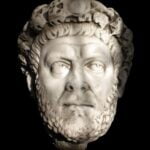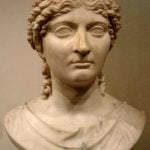In the third century CE the rulers of Rome began gradually to depart from the appearances of the Republic. The growing political ambitions of the emperors led to the expulsion of the rest of the institutions. Aurelian introduced the dominant system in the second half of the 3rd century CE, taking the title dominus et deus (“Our Lord and God”). Diocletian made at the end of the 3rd century CE reconstruction of the state administration, creating a tetrarchy system.
After the death of Theodosius I in 395 CE there was a division of the Roman Empire into the Western and Eastern Roman Empire. There were no specific rules for the appointment of the emperor’s successor – the system of inheritance, nomination by the predecessor or choice by military chiefs was used. The emperor was at the head of all organs of state power and exercised absolute power.
Senates functioned in the capitals of both empires, but their role was limited to the city administration. The advisory role was played by the council coming from the imperial appointment and at the same time acting as a court.







